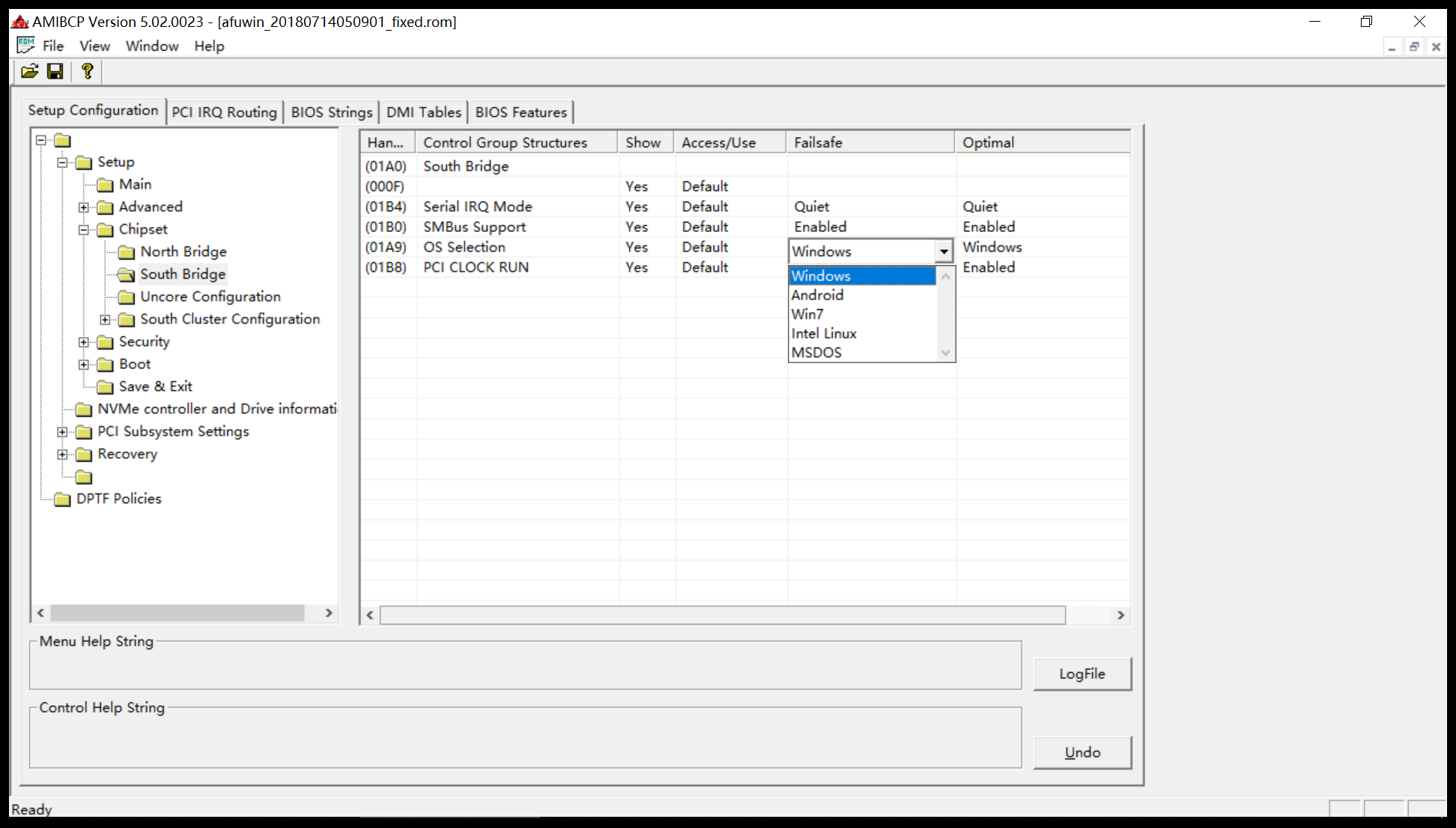

- #Uefitool invalid bios image mac os#
- #Uefitool invalid bios image install#
- #Uefitool invalid bios image update#
- #Uefitool invalid bios image pro#
- #Uefitool invalid bios image mac#
If the latter would be the case, you would not be able to save the modified BIOS Firmware file subsequently.įinally just rename your new “XXXX.jpg” file to “XXXX.raw… In the “Export menu” press “Save”, after selecting “JPEG” under “Format”, after choosing “Desktop” as the place to store the image, and after entering the new file name, which has to end with “.jpg”.ĭouble-check by right-clicking on the resulting jpg image file and selecting “Get Info” that its file size does not exceed 200KB by far. Change the image dimension and save the modified image with “File” -> “Export”. To do so, select in the Preview.app Menu -> “Tools” -> “Adjust Size”. You can make a custom logo for the raw file. If the Boot Logo image dimension is too big for your Monitor’s screen resolution, you might just end up with a black screen during the BIOS initialization at boot. To exchange the default original Boot Logo image file stored in “Raw Section” by the iMacPro.raw image file that you previously downloaded to your Desktop, right-click on “Raw section”, select this time “Replace body” and select the iMacPro.raw image file on your Desktop. Double click on that message and search for the “Raw section” accompanying the “ 7BB28B99-….” entry, which indeed is the Boot Image. Select “Search.” in the UEFITool “Edit” Menu and perform a “GUID” search of “7BB28B99-61BB-11D5-9A5D-0090273FC14D” with “Header only”…
#Uefitool invalid bios image pro#
Now compile the UEFI Tool distribution with the following terminal commands: cd ~/UEFITool/Ĥ.) Download and unzip the custom iMac Pro image to your Desktop.ĥ.) Now launch by UEFITool by clicking on the newly compiled UEFITool.app in the UEFITool Folder in your home directory.Ī.) Select “File” -> “Open image file” and load your patched or unpatched BIOS Firmware distribution. Now we have to change to ~/UEFITool/UEFIPatch/ cd ~/UEFITool/UEFIPatch/Īnd execute the following “bash” commands: qmake uefipatch.pro make
#Uefitool invalid bios image install#
Just enter the following “bash” terminal commands: brew install qt5 brew link qt5 -forceģ.) After successfully implementing BREW and QT5, we can now download the most actual CodeRush UEFIPatch distribution from Github to our home directory with the following terminal command: git clone bashī.) Now enter the following “bash” terminal command and follow the standard BREW installation instructions: /usr/bin/ruby -e "$(curl -fsSL )"Ģ.) After the successful installation of the BREW distribution, we have to implement the QT5 distribution, again by using a “bash” terminal shell.
#Uefitool invalid bios image update#
If you have the experience with other else brand’s board, please let me know and I will update this post.ġ.) Installation of the BREW distribution:Ī.) Open a terminal and change to “bash” shell. So far, I have known this method working in ASUS and Gigabyte brand.
#Uefitool invalid bios image mac#
Warning! this method changes your Bios firmware version to the latest one.įor Other brands’ User (currently Mac only) This guide should be working on Window OS only!ġ.) Go to official Gigabyte website and download the latest App Center and app.Ģ.) Install App Center first and install the app.ģ.) Open the app and Click ‘Face Wizard’Ĥ.) Browse your desired image to change and follow the instruction. The individual steps for the BIOS Patching are detailed below:
#Uefitool invalid bios image mac os#
However, you are ok with another coding method which is fixable in Mac OS as well.īased on the ideas and instructions of from InsanelyMac and from Tonymacx86, I modified an iMacPro.RAW file that achieved by Gigabyte User (Windows only) If you have a Gigabyte board, you are lucky to have easy fix method in Windows OS. But I found this guide and applied it to new boot screen image. Since this logo’s resolution is so small, it looks stretched and ugly in my 4k and 5k resolution monitors. If you use a different brand of board, you can change the logo through a custom BIOS created using UEFI Tool. Gigabyte users can easily change using the apps provided by Gigabyte.

In this guide, we will change the motherboard’s brand logo on the first boot screen to the image of a custom iMac Pro.


 0 kommentar(er)
0 kommentar(er)
